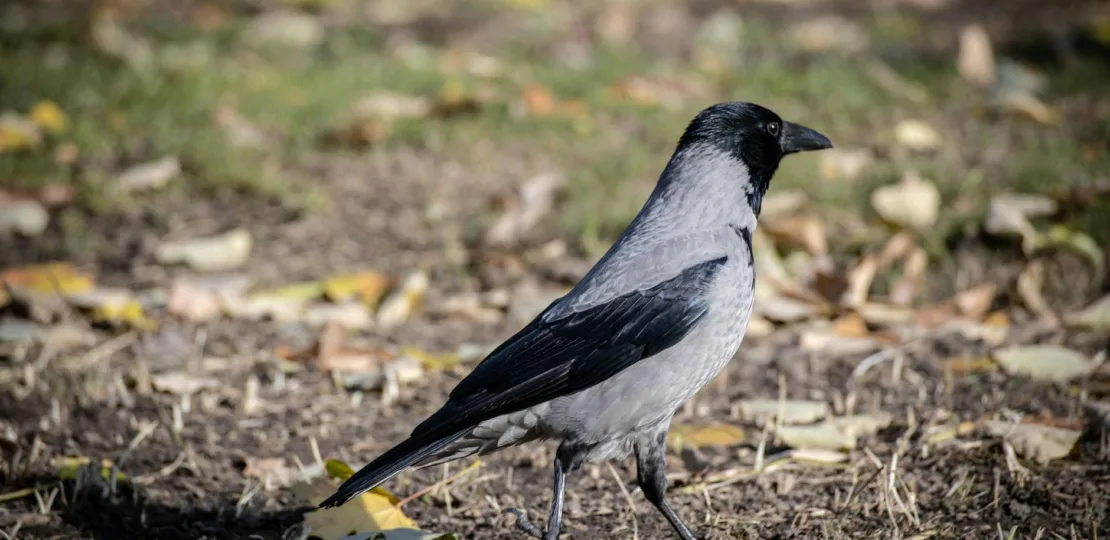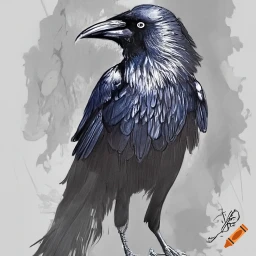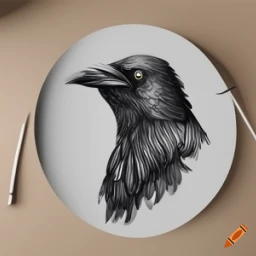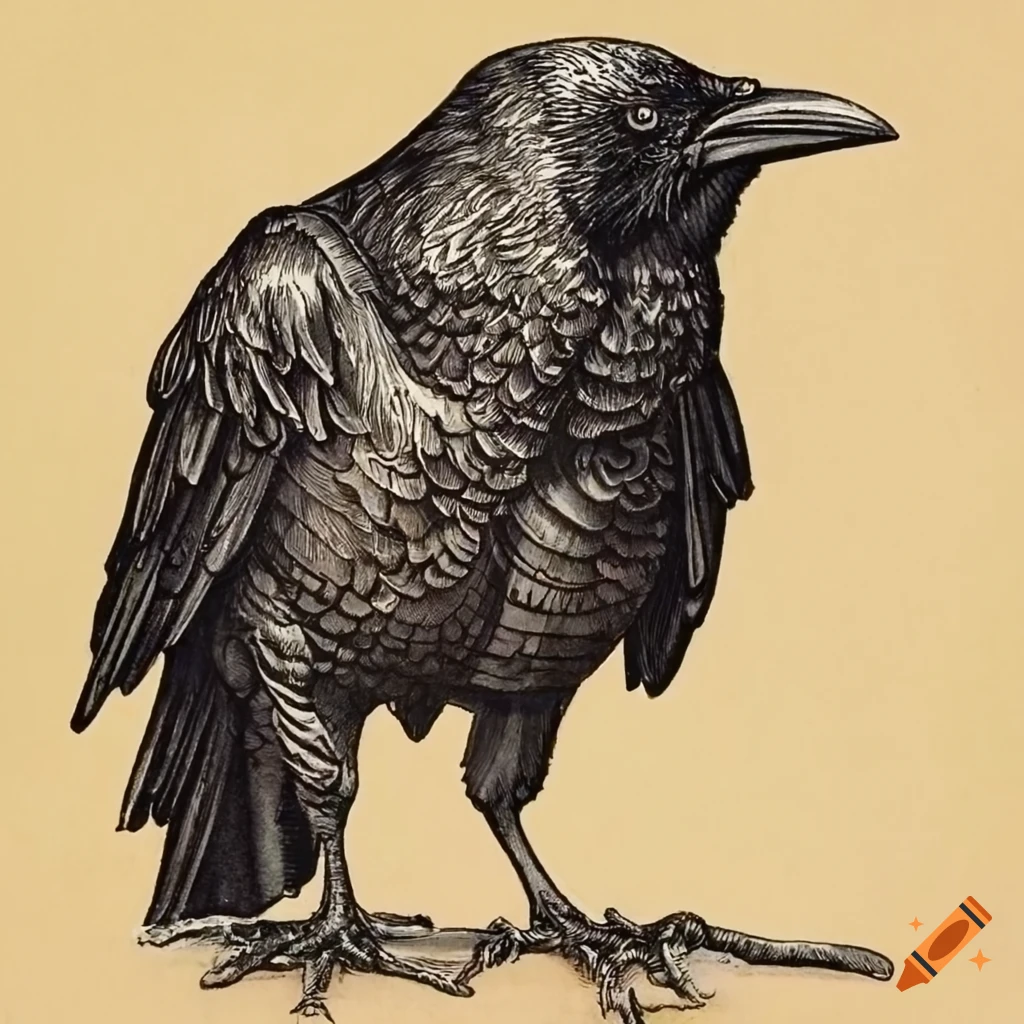Witness the Grace of Corvus Kubaryi – Mariana Crow or Aga
December 30, 2023 | by BlackCrow.com

Meet Corvus Kubaryi
Introduction to Corvus Kubaryi – Mariana Crow or Aga
Corvus Kubaryi, also known as the Mariana Crow or Aga, is a fascinating bird species endemic to the islands of Guam and Rota in the Mariana archipelago. Named after Father John Kubary, a Polish ethnographer, this crow species holds a significant place in the local ecosystem and culture.
The Mariana Crow is a member of the Corvidae family, which includes other intelligent and highly adaptable birds such as ravens and crows. With its striking appearance and intriguing behaviors, the Mariana Crow has captivated the attention of researchers and bird enthusiasts alike.
Habitat and Distribution
The Mariana Crow is primarily found in the forests of Guam and Rota, two islands located in the western Pacific Ocean. These birds inhabit a variety of forest types, including limestone forests, ravine forests, and secondary forests. They are highly adaptable and can also be found in human-altered habitats like plantations and residential areas.
Unfortunately, the population of Mariana Crows has significantly declined over the years. In Guam, their numbers have been greatly impacted by the invasive Brown Treesnake, which preys on the crows and their nests. As a result, the Mariana Crow is now considered extirpated from Guam, meaning it no longer exists as a breeding species on the island.
On Rota, however, the Mariana Crow population remains stable, making it an important stronghold for the species. Efforts are being made to protect and conserve the remaining population on Rota to ensure the survival of this unique bird.
Understanding the habitat and distribution of the Mariana Crow is crucial for conservation efforts. By preserving their natural habitat and implementing measures to control invasive species, we can contribute to the recovery and protection of this remarkable bird species.
To learn more about other crow species, such as the Pied Crow or the Little Crow, visit our articles on corvus albus – pied crow and corvus bennetti – little crow.
Appearance and Characteristics
Corvus Kubaryi, also known as the Mariana Crow or Aga, possesses distinct physical features and displays unique behaviors that set it apart from other crow species.
Physical Description of Corvus Kubaryi
Corvus Kubaryi is a medium-sized bird with a body length of approximately 16 inches (40 centimeters) and a wingspan of around 34 inches (86 centimeters). It has a sleek, black plumage that covers its entire body, including its head, wings, and tail. The feathers have a glossy appearance, adding to the bird’s overall elegance.
One notable characteristic of Corvus Kubaryi is its strong and sturdy bill. The bill is slightly curved, allowing the bird to efficiently forage for food and manipulate objects in its environment. Its eyes are dark and intelligent, providing keen vision to spot potential prey or threats.
Unique Features and Behaviors
Corvus Kubaryi exhibits interesting behaviors and possesses unique features that make it a fascinating species to observe.
One remarkable feature is the bird’s adaptability to its habitat. Found exclusively in the islands of Guam and Rota, Corvus Kubaryi has evolved to thrive in these environments. It has developed specialized foraging techniques, such as using tools to extract food from hard-to-reach places. This ability showcases the bird’s intelligence and problem-solving skills.
Corvus Kubaryi is known for its highly social nature. It forms tight-knit family groups and engages in cooperative breeding, where multiple individuals help raise and care for the young. These social behaviors contribute to the bird’s strong sense of community and cooperation.
Furthermore, Corvus Kubaryi displays remarkable vocalizations. Its calls consist of a variety of caws, croaks, and melodic notes, which are used for communication within the flock and to establish territory boundaries.
The combination of the bird’s physical attributes and unique behaviors make Corvus Kubaryi a captivating species to study and appreciate.
In the next section, we will delve into the conservation status of Corvus Kubaryi and the efforts being made to protect this remarkable bird. Stay tuned!
References:
- corvus albus – pied crow (central african coasts to southern africa)
- corvus bennetti – little crow (australia)
- corvus capensis – cape crow or cape rook (eastern and southern africa)
- corvus brachyrhynchos – american crow (united states, southern canada, northern mexico)
- corvus cornix – hooded crow (northern and eastern europe and northern africa and middle east)
- corvus corone – carrion crow (europe and eastern asia)
- corvus culminatus – indian jungle crow (south asia)
- corvus edithae – somali crow or dwarf raven (eastern africa)
- corvus enca – slender-billed crow (malaysia, borneo, indonesia)
- corvus florensis – flores crow (flores island)
- corvus fuscicapillus – brown-headed crow (new guinea)
- corvus hawaiiensis (formerly c. tropicus) – hawaiian crow (hawaii)
- corvus imparatus – tamaulipas crow (gulf of mexico coast)
- corvus insularis – bismarck crow (bismarck archipelago, papua new guinea)
- corvus jamaicensis – jamaican crow (jamaica)
- corvus leucognaphalus – white-necked crow (haiti, dominican republic, puerto rico)
- corvus levaillantii – eastern jungle crow (india, burma)
- corvus macrorhynchos – large-billed crow (eastern asia)
- corvus meeki – bougainville crow or solomon islands crow (papua new guinea, northern solomon islands)
- corvus moneduloides – new caledonian crow (new caledonia, loyalty islands)
- corvus orru – torresian crow or australian crow (australia, new guinea and nearby islands)
- corvus nasicus – cuban crow (cuba, isla de la juventud, grand caicos island)
- corvus ossifragus – fish crow (southeastern u.s. coast)
- corvus palmarum – palm crow (cuba, haiti, dominican republic)
- corvus sinaloae – sinaloa crow (pacific coast from sonora to colima)
- corvus splendens – house crow or indian house crow (south asia, middle east, east africa)
- corvus tristis – grey crow or bare-faced crow (new guinea and neighboring islands)
- corvus torquatus – collared crow (eastern china, south into vietnam)
- corvus typicus – piping crow or celebes pied crow (sulawesi, muna, butung)
- corvus validus – long-billed crow (northern moluccas)
- corvus unicolor – banggai crow (banggai island)
- corvus violaceus – violet crow (seram) – recent split from slender-billed crow
- corvus woodfordi – white-billed crow or solomon islands crow (solomon islands)
- corvus praecorax – (fossil: early pliocene of perpignan, france; possibly a subspecies of c. corone/cornix)
- corvus hungaricus – (fossil: late pliocene/early pleistocene of southern europe; tentatively placed here)
- corvus simionescui – (fossil: early pliocene of maluşteni-bereşti, romania; possibly a subspecies of c. corone/cornix)
- corvus moravicus – (fossil: late pliocene/early pleistocene of central to eastern europe; possibly a subspecies of c. monedula)
- corvus pliocaenus – (fossil: late pliocene –? early/middle pleistocene of europe; possibly a subspecies of c. corone/cornix)
- corvus antecorax – (fossil: late pliocene – late pleistocene of europe; may be c. janossyi, possibly a subspecies of c. corax)
- corvus bragai – (fossil: pliocene/pleistocene transition of south africa)[4]
- corvus betfianus – (fossil: early pleistocene of betfi, romania; possibly a subspecies of c. corone/cornix)
- corvus fossilis – (fossil: late pleistocene seveckenberg, germany; probably a subspecies of c. corax)
- corvus neomexicanus – (fossil: late pleistocene of dry cave, united states)
- corvus antipodum – new zealand raven (prehistoric: new zealand)
- corvus impluviatus – high-billed crow (prehistoric: hawaii)
- corvus moriorum – chatham raven (prehistoric: the chatham islands, the southwestern pacific)
- corvus pumilis – puerto rican crow (prehistoric: puerto rico; possibly a subspecies of c. nasicus/palmarum)
- corvus viriosus – robust crow (prehistoric: hawaii)
- corvus sp. – new ireland crow (prehistoric: new ireland, melanesia)
Conservation Status and Importance
The conservation status and importance of Corvus Kubaryi, also known as the Mariana Crow or Aga, cannot be understated. This unique species is endemic to the islands of Guam and Rota, making it a vital part of the local ecosystem. However, it faces several threats that put its survival at risk.
Threats to Corvus Kubaryi
Corvus Kubaryi faces a range of threats that have contributed to its vulnerable status. One of the main threats is habitat loss and degradation due to human activities, including urbanization, deforestation, and agriculture. These activities have resulted in the loss of suitable nesting and foraging habitats for the crows.
Predation by invasive species, such as the brown tree snake, poses another significant threat to Corvus Kubaryi. The introduction of this snake to the islands has led to a decline in the crow population, as the snakes prey on both the adult crows and their eggs.
Additionally, disease outbreaks have had a detrimental impact on Corvus Kubaryi. Avian diseases, such as avian malaria and avian pox, have been introduced to the islands through non-native bird species. The crows have little resistance to these diseases, further contributing to their decline.
Conservation Efforts and Initiatives
Efforts are being made to protect and conserve Corvus Kubaryi and its habitat. These initiatives aim to address the threats facing the species and promote its long-term survival. Some of the key conservation efforts include:
- Habitat Restoration and Protection: Conservation organizations are working to restore and protect the remaining habitats of Corvus Kubaryi. This includes reforestation projects, creating protected areas, and implementing measures to prevent further habitat loss.
- Invasive Species Control: To mitigate the impact of invasive species, particularly the brown tree snake, efforts are being made to control and eradicate these pests. This involves trapping and removing the snakes from the islands to reduce predation pressure on the crows.
- Disease Monitoring and Management: Conservationists are closely monitoring the health of Corvus Kubaryi populations and actively managing the spread of avian diseases. This includes conducting regular health assessments, implementing disease control measures, and conducting research to better understand disease dynamics.
- Public Awareness and Education: Raising public awareness about the importance of Corvus Kubaryi and its conservation is crucial. Educational programs, community engagement initiatives, and outreach efforts are being carried out to promote understanding and support for the species.
By implementing these conservation efforts and initiatives, there is hope for the recovery of Corvus Kubaryi populations. However, continued support and collaboration between conservation organizations, local communities, and government agencies are essential for the long-term success of these conservation endeavors.
In the next section, we will explore some interesting facts about Corvus Kubaryi and its cultural significance.
Fun Facts about Corvus Kubaryi
Corvus Kubaryi, also known as the Mariana Crow or Aga, is an intriguing bird with various interesting aspects worth exploring.
Interesting Tidbits about Corvus Kubaryi
Here are some fascinating facts about Corvus Kubaryi:
- Endemic to Guam and Rota: Corvus Kubaryi is native to the islands of Guam and Rota in the Mariana Islands. Its limited range makes it a unique and special species.
- Small Population: The population of Corvus Kubaryi is relatively small, which adds to its vulnerability. It is estimated that there are only around 175 individuals remaining in the wild.
- Distinctive Appearance: Corvus Kubaryi has a sleek black plumage and a slender body. It possesses a slightly curved bill and striking pale blue eyes, which create a captivating contrast against its dark feathers.
- Intelligent and Resourceful: Like other members of the crow family, Corvus Kubaryi is highly intelligent and resourceful. It displays problem-solving abilities and has been observed using tools to obtain food.
- Vocal Communication: Corvus Kubaryi is known for its range of vocalizations, which include a variety of caws, croaks, and clicks. These vocalizations play a significant role in communication within the crow community.
Cultural Significance and Folklore
Corvus Kubaryi holds cultural significance for the indigenous Chamorro people of Guam and Rota. It features in several traditional legends and folklore, symbolizing different aspects of their culture and beliefs.
In Chamorro folklore, the Mariana Crow is often associated with messages from ancestors or spirits. Its appearance or behavior is believed to carry meaning or provide guidance to individuals. It is considered a messenger, bridging the gap between the physical and spiritual worlds.
The Mariana Crow’s intelligence and resourcefulness have also earned it respect and admiration in local folklore. It is sometimes depicted as a clever and cunning character, capable of outsmarting other creatures.
These cultural connections highlight the deep-rooted relationship between Corvus Kubaryi and the people of Guam and Rota, showcasing its significance beyond its physical presence.
By understanding these fun facts and cultural connections, we can develop a greater appreciation for Corvus Kubaryi and the unique role it plays in the ecosystem and local traditions.
How to Support Conservation
Conservation efforts play a vital role in protecting the Corvus Kubaryi, also known as the Mariana Crow or Aga. If you’re passionate about preserving this unique bird species, there are several ways you can contribute to its conservation.
Ways to Help Protect Corvus Kubaryi
- Support Local Conservation Organizations: Get involved with local conservation organizations that focus on protecting endangered bird species in the Guam and Rota regions. By volunteering your time, making financial contributions, or participating in their programs and initiatives, you can actively contribute to the conservation of Corvus Kubaryi.
- Spread Awareness: Educate others about the importance of protecting the Mariana Crow. Share information about its habitat, behavior, and conservation status with your friends, family, and community. Encourage them to join in the efforts to safeguard this unique bird species.
- Report Sightings: If you happen to spot a Mariana Crow or Aga in the wild, report the sighting to local birdwatching or conservation groups. These sightings can provide valuable data for researchers and help them better understand the population and distribution of Corvus Kubaryi.
- Promote Habitat Preservation: Advocate for the preservation of natural habitats that are crucial for the survival of the Mariana Crow. Support initiatives aimed at protecting forests, reducing deforestation, and conserving the biodiversity of the Guam and Rota regions.
- Reduce Single-Use Plastics: Plastic pollution poses a significant threat to various bird species, including the Mariana Crow. Take steps to reduce your use of single-use plastics, such as plastic bags and bottles. Opt for reusable alternatives and participate in local clean-up initiatives to help keep the environment free from plastic waste.
Creating Awareness and Taking Action
- Organize Awareness Campaigns: Collaborate with local schools, community centers, or environmental groups to organize awareness campaigns focused on the Mariana Crow. Conduct workshops, seminars, or presentations to educate people about the bird’s conservation needs, highlighting the importance of protecting its habitat and raising funds for conservation efforts.
- Support Research Initiatives: Contribute to research efforts by supporting organizations or researchers working on studying and conserving the Mariana Crow. Donations and grants can help fund research projects aimed at understanding the bird’s behavior, population dynamics, and threats it faces.
- Participate in Citizen Science Programs: Engage in citizen science programs that involve collecting data related to the Mariana Crow. By participating in bird surveys, monitoring programs, or data collection initiatives, you can contribute valuable information that contributes to scientific research and conservation efforts.
- Advocate for Legal Protection: Work with local authorities and environmental agencies to advocate for legal protection measures for the Mariana Crow. Support the implementation and enforcement of policies that safeguard the bird’s habitat, restrict harmful activities, and promote conservation practices.
Remember, every effort counts when it comes to protecting the Corvus Kubaryi. By actively participating in conservation activities, spreading awareness, and supporting research and protection initiatives, you can make a positive impact on the survival of this unique bird species.
RELATED POSTS
View all


